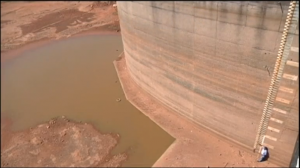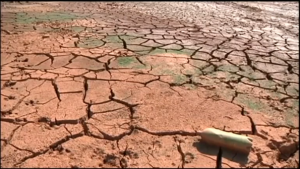
Brazil made a bold pledge before the United Nations General Assembly in September, promising to slash green house emissions by 43 percent by 2030 through a concerted effort to expand renewable energy sources.
The ambitious proposal was announced as nations throughout the world put forward their plans to tackle climate change ahead of the UN COP-21 conference late November, where the Paris Agreement will be drawn up to replace the expired Kyoto Protocol.
Brazilian President Rousseff said that the target would be reached by increasing the share of renewables in the country’s overall power generation from 15 to 23 percent by 2030.
Significantly, hydroelectric energy was not included in that figure, and once Brazil’s crutch for clean energy production, its presence is diminishing.
According to Rio de Janeiro-based economist and environmentalist Sergio Besserman, the diversification of sources represents a change in tack within Brazilian energy production.
“The proposal submitted officially by the government ahead of Paris outlines a very large expansion in renewable energy sources such as wind, solar and other sources. It will be a change in course. Until now, what complemented hydroelectric production was thermoelectric power, which caused a great increase in Brazilian greenhouse gas emissions,” Besserman told Reuters.
Where hydroelectric power constituted 80 percent of the country’s total energy output some years ago, that figure dropped to 66.6 percent in 2015, according to the Ministry of Mines and Energy (MME).
One of the main reasons for the drop is due to the changing atmosphere, in which continuing deforestation has led to decreased humidity, erratic rain patterns, and periodic drought, significantly reducing Brazil’s hydroelectric capacity.
According to Brazilian Wind Energy Association President Dr Elbia Melo this is one of the main factors forcing the energy sector to diversify. 
“The wet season, the period in which it rains and fills the reservoirs, has been very short and it has rained at unusual times, so we are no longer managing to fill our reservoirs. Over the last two years, the possibility for the production of hydroelectric energy has reduced significantly by around eight percent. This is very clear for us, for technicians in the sector and for the government itself, so we are seeing our energy production being rerouted in search of other renewable sources,” said Dr Melo.
Particular investment has been seen in wind energy, with a 117 percent increase of 90 to 195 wind farms across the country between 2013 and the start of 2015, according to government figures.
The World Wind Energy Association found in 2014 that Brazil represented the third largest growth in the market, behind India and the United States.
According to the MME, wind energy currently makes up just 3.7 percent of Brazil’s total output, and is expected to rise to eight percent by 2018.
The latest round of auctions held by the Energy Research Company (EPE) in July saw contracts signed to build 19 new wind farms across the northeast with a capacity of 538,8 megawatts.
The expansion in wind farms, however, will only be exploited if a comprehensive transmission network is constructed to connect the main producing regions and consumer centres.
Six billion Brazilian reales (1.59 billion U.S. dollars) is needed to build 4,087 kilometres (2,539 miles) of new transmission lines between the states of Bahia, Goias, Minas Gerais and Espirito Santo, according to the MME, as well as a further 600 million reales (159 million U.S. dollars) for 1,200 (745 miles) across the northeast.
Whilst strong winds create potential for energy sources in the south of the country, particular investment has been focused on the northeast, where winds remains uni-directional throughout the year, according to Manager of the Trairi Wind Complex in Ceara, Alexandre Thiele.
“What we have observed in relation to wind energy in particular, like all renewable energy sources in Brazil, is that the growth is going to be exponential. We expect renewable energy to double in the next 15 years in Brazil, and with the direction and strength of the winds here in the northeast, we are sure that wind energy is a source that is here to stay and which will grow significantly in the coming years,” Thiele explained.
One resource Brazil has not yet capitalised on is the year-round exposure to sunlight across most of the continent-sized territory.
Solar energy makes up just 0,01 percent of the country’s output, after a 207 percent increase on 2014.
 The government has aimed to remedy this through the Brazilian Development Bank (BNDES), which this year approved 26 million reales (6.9 million U.S. dollars) for a project to nationalise the production of photovoltaic panels currently produced by the company Pure Energy. This is the first solar energy project financed by the bank.
The government has aimed to remedy this through the Brazilian Development Bank (BNDES), which this year approved 26 million reales (6.9 million U.S. dollars) for a project to nationalise the production of photovoltaic panels currently produced by the company Pure Energy. This is the first solar energy project financed by the bank.
A further six million reales (1.59 million U.S. dollars) were invested by government agencies to fund a project to increase the efficiency of solar panels produced in Brazil.
The initiative, led by researchers at the Pontifical Catholic University of Rio Grande do Sul, aims to develop panels capable of converting 15.4 percent of solar energy into electricity, above the 14 percent global average, and below the highest existing capacity of 16 percent.
The latest EPE auction for solar energy development held in August saw 382 new projects accredited for 20 year contracts beginning in 2017.
As in the case regarding wind energy, nuclear physicist Luiz Pinguelli says that beyond the expansion of projects on a national scale, further investment is needed to bring the source of solar energy closer to the consumer.
“If you consider the diffuse use of solar energy by the very consumers – for example, putting a solar panel on the roofs of houses, industry, hotels, shopping centres – then it is viable, but this needs a strong financing effort, because the initial phase is expensive, but the price after that compensates for it,” said Pinguelli.
In addition to investments in wind and solar energy, Brazil expects a rise in biomass fuels from 9,2 percent to 15 percent of the country’s total output.
However, over half the biomass output in Brazil is produced from the combustion of cane sugar residue, which is also considered a pollutant.







